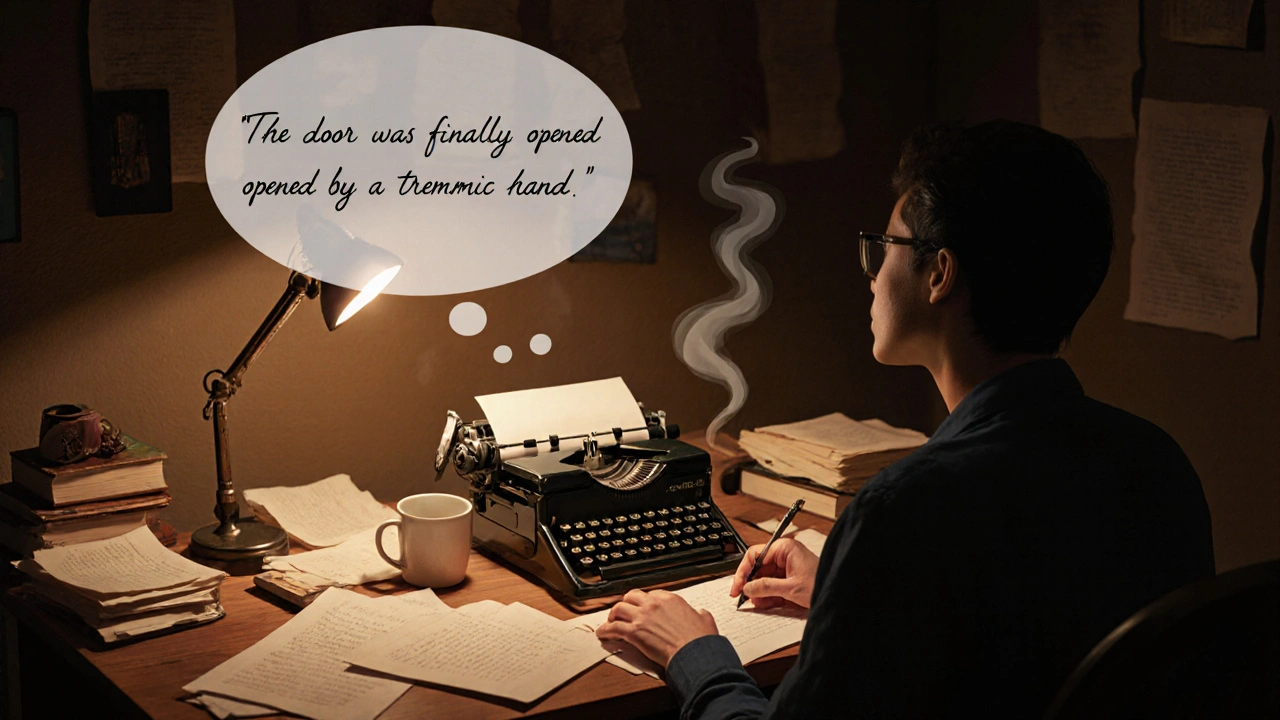When you hear Rimming Passive is a writing technique that deliberately uses passive constructions at the end of sentences to create a lingering, reflective effect in narrative prose, you might picture a grammar lesson. In reality it’s a subtle narrative trick that helps novelists control pacing, heighten tension, and give readers a moment to breathe.
Direct Answer
Rimming Passive is the practice of ending a sentence with a passive‑voice clause so the action hangs in the reader’s mind, creating a gentle pause that can deepen mood or emphasize a theme.
Key Points
- Ends sentences with passive constructions to slow the rhythm.
- Works best in scenes that need reflection or atmosphere.
- Pairs well with active sentences for contrast.
- Can reinforce themes without overt exposition.
- Requires careful balance; overuse feels lazy.
Comprehensive Guide to Rimming Passive
Imagine you’re reading a thriller. The hero darts across a dark alley, a gun crackles, and then the line ends: "The door was finally opened by a trembling hand." The reader feels the suspense linger because the action is left hanging in passive form. That lingering feeling is exactly what rimming passive aims for.
Definition and Context
In plain terms, rimming passive means you deliberately place a passive‑voice clause at the very end of a sentence. The classic active sentence goes "John opened the door." The rimming passive flips it to "The door was opened by John." By tucking the action at the tail, you invite the reader to pause and picture the scene before moving on.
Why does this matter for novelists? Narrative pacing is a tool as crucial as plot twists. By sprinkling rimming passive moments, you can slow the heart‑rate of a high‑octane chapter, giving readers space to absorb emotions, setting, or symbolism.
Benefits of Rimming Passive
1. Controls Pace - A passive ending naturally stretches the rhythm, perfect for mood‑heavy scenes.
2. Enhances Atmosphere - The extra breath lets sensory details settle, making descriptions feel richer.
3. Subtly Reinforces Theme - If a story explores loss of control, ending sentences passively mirrors that loss.
4. Contrasts with Active Voice - Alternating active bursts with passive drags creates a musical cadence that keeps readers hooked.
5. Encourages ‘Show, Don’t Tell’ - By focusing on the result rather than the doer, you invite imagination instead of exposition.

Types of Rimming Passive Available in Writing
There isn’t a one‑size‑fit‑all version, but you can think of the technique in three flavors:
- Atmospheric Rimming - Used in world‑building or mood scenes (e.g., "The sky was painted in bruised purples.")
- Emotional Rimming - Highlights inner states (e.g., "A sigh was released from her chest.")
- Thematic Rimming - Reinforces story ideas (e.g., "The promise was broken by the wind.")
How to Find Rimming Passive Opportunities in Your Draft
Start by scanning for sentences that end on an action verb in active voice. Ask yourself: "Can I flip this to passive and still keep meaning?" If the answer is yes, try it. Look especially at scenes where you want the reader to linger - a reveal, a landscape description, or an emotional beat.
A quick tip: copy the sentence, replace the subject with the object, add a form of "to be," and tack "by" if you still need the actor. For example, "She slammed the door" becomes "The door was slammed by her." Then read it aloud; if the cadence feels slower, you’ve nailed a rimming passive.
What to Expect When Using Rimming Passive
Readers may not notice the grammatical shift consciously, but they will feel a different pulse. In a fast‑moving chase, a sudden passive sentence can act like a pause button, letting the tension settle before the next explosion. In a romance, it can give a tender moment a lingering softness.
However, misuse leads to flat prose. If every sentence ends in passive, the story loses energy. Think of rimming passive as a seasoning - a pinch, not a bucket.
Pricing and Booking (Metaphorical)
Unlike a service you book, rimming passive costs only your attention and revision time. It’s free to try, but the "price" is the extra edit pass where you hunt for the right moments. Budget a paragraph or two per chapter for experimentation.

Safety Tips for Writers
- Don’t over‑use; aim for 1‑2 passive endings per 300 words.
- Keep the actor clear if it matters - sometimes you’ll need the "by" clause, other times you can omit it for mystery.
- Read aloud; passive endings should feel natural, not forced.
- Check tense consistency - mixing past passive with present active can confuse readers.
- Use a style guide or grammar checker to avoid accidental passive overuse.
Comparison Table: Rimming Passive vs. Active Voice in Narrative
| Aspect | Rimming Passive | Active Voice |
|---|---|---|
| Rhythm | Slower, lingering | Quick, direct |
| Emotional Weight | Heightened, reflective | Immediate, energetic |
| Scene Suitability | Mood, description, thematic beats | Action, dialogue, plot thrust |
| Risk | Can feel lazy if overused | May be too abrupt for subtle moments |
| Reader Perception | Feels like a pause to think | Feels like a step forward |
FAQ: Your Questions About Rimming Passive Answered
Is rimming passive the same as using passive voice everywhere?
No. The technique is about placing a passive clause specifically at the end of a sentence to create a pause. Regular passive voice can appear anywhere and doesn’t have the same rhythmic purpose.
Can I use rimming passive in dialogue?
Generally avoid it in dialogue. Speech should feel natural and active. Save the technique for narration or internal monologue where you control the rhythm.
How often should I sprinkle rimming passive?
A good rule of thumb is 1-2 per 300‑400 words. Adjust based on the mood you want - slower chapters can handle more, fast chapters need fewer.
Does rimming passive work in all genres?
It shines in literary fiction, mystery, and horror where atmosphere matters. In high‑tempo thriller or comedy, use it sparingly.
What’s a quick way to spot missed rimming passive spots?
Search your manuscript for sentences ending in verbs like "was", "were", "been" followed by a past participle. Those are natural candidates for conversion.
Call to Action
Ready to give your prose a subtle breath of fresh air? Try slipping a few rimming passive sentences into your next chapter and see how the rhythm changes. Your readers will feel the difference without even realizing why.








Kelsey Stratton
October 21, 2025 AT 00:40I read the article and it made me think about pacing in my own drafts. The idea of ending with a passive clause is simple enough to try. It could give a slow breath in a tense scene. I might add a couple of these to my next chapter. It feels like a small tool but could change the rhythm.
Sean Marcus
November 7, 2025 AT 08:20I dunno why anyone needs this, it sounds like over‑engineered fluff 😊
prajesh varma
November 24, 2025 AT 17:00Whoa, this technique is like a secret sauce for writers who want to mess with readers’ heads. Ending a line with a passive clause slams the pause button hard. It’s a bold move that can either amplify tension or flop like a limp noodle. I can see it working in horror when you want the dread to linger. In action scenes it might drag you down, so use it sparingly. The article nails the balance between atmosphere and laziness.